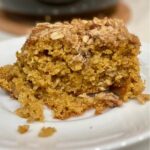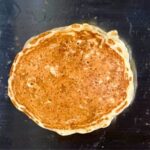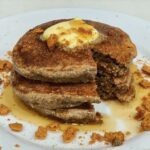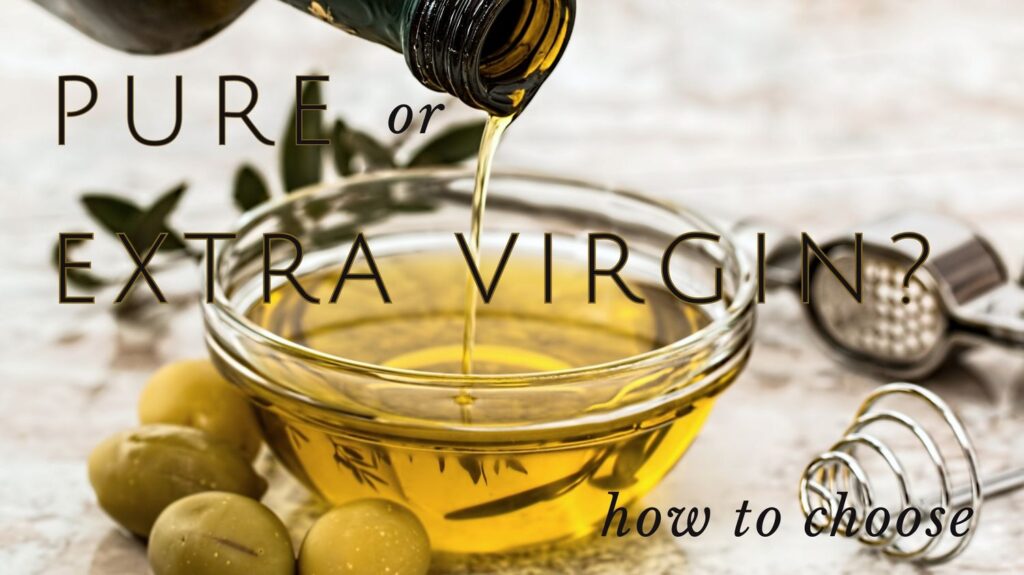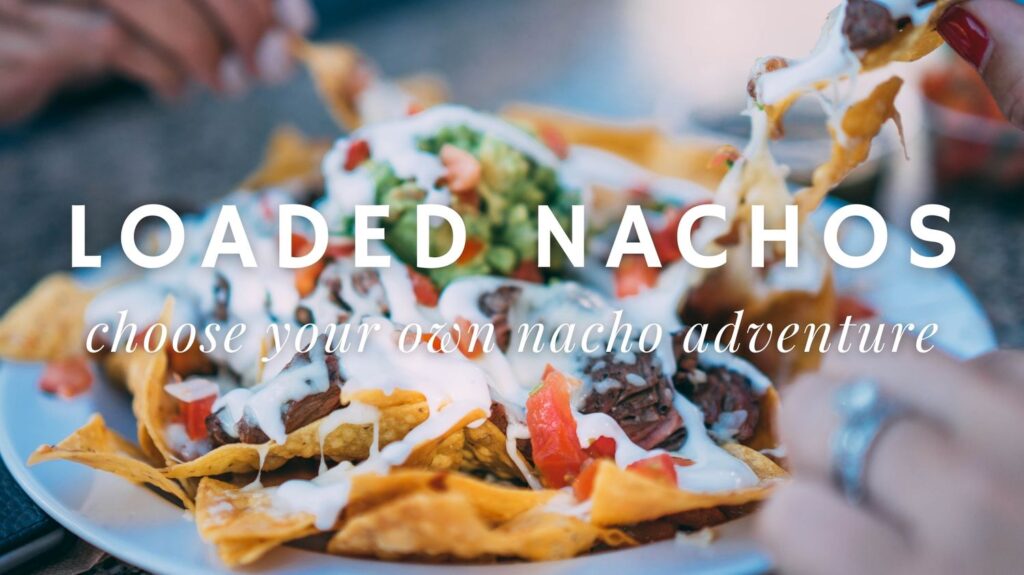We recommend products we would use ourselves and all opinions expressed here are our own. This post may contain affiliate links, which means we might make a small commission at no extra cost to you. This helps us keep the blog running. See our full disclosure here.
Decoding the Difference: Pure Olive Oil vs. Extra Virgin Olive Oil
Navigating olive oil choices can be a tedious task when faced with options like pure olive oil vs extra virgin olive oil (EVOO). While both are derived from olives, their production processes and qualities vary significantly. Understanding the difference between pure olive oil and extra virgin helps you know when to use one versus the other. Especially because EVOO is so much more expensive than pure, you’ll want to be sure not to waste it.
What is Pure Olive Oil?
Pure olive oil, also known as just “olive oil,” “refined olive oil” or “regular olive oil,” is a type of oil that undergoes a refining process. This refining process involves filtering and refining the oil to remove any impurities and neutralize strong flavors. As a result, pure olive oil has a milder flavor compared to extra virgin olive oil. Brightland, a California olive oil company has a good article explaining the refining processes that pure olive oil undertakes.
What is Extra Virgin Olive Oil?
Extra virgin olive oil (EVOO) is the highest grade of olive oil, renowned for its superior quality and flavor. It is extracted from olives using mechanical methods, without the use of chemicals or excessive heat. This gentle extraction preserves the natural flavors, nutrients, and antioxidants present in the olives. The result is a rich, fruity taste with a distinct peppery finish.
Key Differences Between the Oils
- Flavor: Pure olive oil has a more neutral flavor profile, making it suitable for cooking applications where a subtle taste is desired. On the other hand, EVOO oil boasts a robust flavor profile, characterized by fruity notes and a peppery kick, making it ideal for drizzling over salads or dipping bread.
- Acidity: Extra virgin olive oil has a lower acidity level (below 0.8%) compared to pure olive oil. Pure olive oil may have a slightly higher acidity due to the refining process. The lower acidity of EVOO contributes to its superior taste and quality.
- Nutritional Value: Extra virgin olive oil retains more of the natural antioxidants and beneficial compounds found in olives. These compounds, such as polyphenols and vitamin E, make it a healthier option compared to pure olive oil.
Cooking Applications
When to Use Pure Olive Oil
Due to its mild flavor and higher smoke point compared to extra virgin olive oil, pure olive oil is well-suited for sautéing, frying, and baking. Refined olive oil can be heated to 470 °F which is higher than EVOO’s 400 °F smoke point. Thefore, some like to use it for high-heat applications. It also does great in baking applications where you would not want the intense flavor of EVOO. Pure olive oil flavor is more neutral, like a vegetable oil’s flavor. A good rule of thumb to help you decide to use pure olive oil is this: if you aren’t highlighting the olives flavor and want to save money, choose pure olive oil.
When to Use Extra Virgin Olive Oil
With its bold flavor and low smoke point, extra virgin olive oil is best used in recipes where its taste can shine, such as salad dressings, dips, marinades, and finishing drizzles. EVOO should not be subjugated to extreme high heat if you want to keep the intense flavor of the oil. When heated, the delicate flavors of the oil may degrade due to exposure to high temperatures. High temps can potentially alter its taste profile and reduce its antioxidant content.
However, in Mediterranean countries like Greece and Italy, it’s common to fry foods in extra virgin olive oil (EVOO). While some caution against frying with EVOO due to its lower smoke point compared to other oils, many Mediterranean cultures have a long history of using EVOO for cooking, including frying. The key is to use fresh, high-quality EVOO and not let it reach its smoke point (around 375-405 °F). When used properly, frying in EVOO can result in delicious and flavorful dishes.
Embrace the Versatility of Olive Oil
In summary, while both pure olive oil and extra virgin olive oil originate from olives, their distinct production methods and flavor profiles set them apart. Understanding the differences between these two varieties empowers you to make informed choices in the kitchen. So, next time you reach for that bottle of olive oil, you’ll know exactly what sets them apart.
We love to bake with olive oil. Below are some of our baked goods where we have substituted olive oil for butter.

